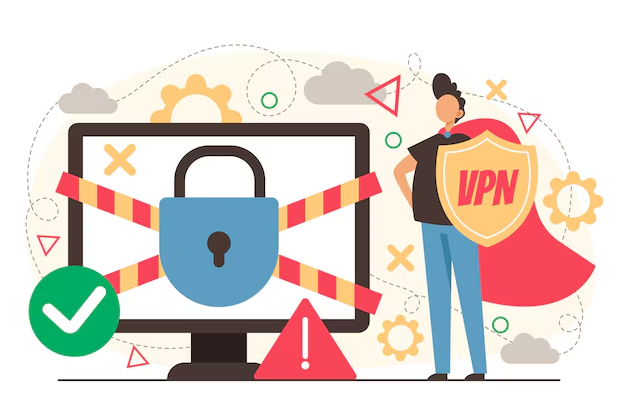Essential Best Practices for Ensuring Software Development Security Secure Code
In today’s rapidly evolving technological landscape, ensuring the robustness and trustworthiness of applications is paramount. As digital threats become increasingly sophisticated, it is crucial for creators to adopt measures that safeguard their projects from potential vulnerabilities. The responsibility of maintaining this integrity falls upon the shoulders of those who design and implement these systems.
The importance of incorporating a sound approach to protect against various cyber threats cannot be overstated. A proactive stance not only shields sensitive data but also fosters a culture of awareness among team members. By embedding protective methodologies throughout the creation process, one can significantly reduce risks and elevate the overall quality of the final product.
An effective strategy requires a blend of preventative techniques, continuous education, and rigorous testing. By prioritizing these areas, teams can develop a resilient framework that stands strong against both known and emerging challenges. Embracing these guidelines will not only enhance the reliability of applications but also instill confidence among users and stakeholders alike.
Understanding the Importance of Security
In today’s interconnected digital landscape, safeguarding information has become a crucial necessity. The implications of vulnerabilities extend beyond individual projects, impacting clients, organizations, and wider communities. Therefore, prioritizing protection measures is essential for maintaining trust and ensuring longevity in any initiative.
The Consequences of Neglect
When protective measures are overlooked, the potential fallout can be significant. Data breaches, financial losses, and reputational damage can arise from weaknesses in code. Furthermore, the legal ramifications for failing to uphold data integrity can be severe, leading to hefty fines and loss of client confidence. Thus, a proactive approach is vital to avoid these adverse outcomes.
Building a Strong Foundation
A commitment to safety fosters a culture of awareness. It empowers individuals within an organization to recognize and resolve risks early in the process. By equipping teams with the knowledge and resources necessary to identify potential flaws, organizations can also enhance the overall quality of their outputs. Adopting this mindset not only benefits the immediate project but also creates a resilient framework for future endeavors.
Investing time and effort into protective measures is not merely an obligation; it is a strategic advantage in an ever-evolving technological environment. Emphasizing awareness and preparation can lead to far-reaching rewards in the long term.
Common Threats in Software Development
In the realm of creating applications, various dangers lurk that can compromise integrity and functionality. Recognizing these inherent risks is crucial for maintaining robust and reliable products. Understanding the landscape of potential vulnerabilities enables professionals to implement effective countermeasures.
Types of Vulnerabilities
The spectrum of vulnerabilities often encompasses issues such as buffer overflows, where excess data spills into adjacent memory. This can lead to unpredictable behavior or exploitation by malicious users. Another significant threat is injection attacks, which occur when untrusted data is executed as commands, allowing hackers to manipulate or corrupt information.
External Risks
External factors, including social engineering, pose additional challenges. Attackers may exploit human psychology to gain unauthorized access to systems or sensitive data. Furthermore, malware poses a persistent risk, as it can infiltrate networks and compromise not just individual applications, but entire infrastructures.
Implementing Secure Coding Practices
In a world increasingly reliant on technology, safeguarding applications from potential threats is paramount. Adopting stringent measures while crafting code ensures that vulnerabilities are minimized and the integrity of the system is upheld. Developers must be equipped with the knowledge and tools to write code that not only functions as intended but also withstands malicious attempts to exploit weaknesses.
A thorough understanding of potential risks allows developers to prioritize safety during the coding process. Regularly updating libraries and frameworks can significantly reduce the risk of using outdated and vulnerable components. Furthermore, maintaining precise validation and sanitization for all user inputs helps to thwart common attacks such as injection and cross-site scripting.
Employing a principle of least privilege also plays a crucial role in building resilient applications. By limiting access rights for users and systems, developers can prevent unauthorized actions that could lead to data breaches or system compromises. Additionally, integrating automated testing and code reviews can capture security flaws early in the development life cycle, allowing for timely remediation.
Finally, fostering a culture of awareness around safe coding techniques empowers teams to remain vigilant in the face of evolving threats. Continuous education and collaboration among peers can create a robust environment where secure methods become second nature, ultimately leading to more secure and reliable software solutions.
Regularly Updating Dependencies and Libraries
Keeping your project’s components up to date is crucial for maintaining its integrity and efficiency. Regular updates help mitigate risks and enhance performance by integrating the latest features and fixes, ultimately leading to a more robust application.
Outdated modules can introduce vulnerabilities, making your project susceptible to various threats. By frequently revisiting and refreshing these components, you not only strengthen your code but also ensure compatibility with new technologies and frameworks.
Here are some key reasons for maintaining current dependencies:
- Addressing known vulnerabilities promptly
- Improving functionality with new enhancements
- Ensuring compatibility across platforms and devices
- Gaining access to new tools and optimizations
To effectively manage updates, consider implementing the following strategies:
- Automate the process: Use tools to automatically check for updates and notify you of new versions.
- Monitor dependencies: Regularly review the project’s dependencies to identify which ones need attention.
- Test after updates: After updating a library, conduct thorough testing to catch any issues that may arise from version changes.
- Document changes: Keep records of updates made, including any changes in functionality or potential impacts.
In summary, a disciplined approach to revising dependencies and libraries is vital for sustaining high-quality code and preventing potential issues down the line. Regular attention to this aspect will safeguard your project from risks and ensure its continual improvement.
Conducting Thorough Security Testing
Ensuring the integrity and resilience of applications necessitates a deep examination of their vulnerabilities. This process involves systematic analysis to unearth weaknesses that could be exploited. Proper evaluation techniques not only safeguard data but also bolster user trust in the product.
Types of Testing Methodologies
A comprehensive approach to identifying flaws encompasses various methodologies, including the following:
- Static Analysis: Reviewing the source code without executing the program allows for the detection of potential vulnerabilities early in the life cycle.
- Dynamic Analysis: Executing the application in a controlled environment helps identify issues that only arise during runtime.
- Penetration Testing: Simulating attacks to explore the system’s defenses provides insights into real-world vulnerabilities.
- Threat Modeling: Identifying and prioritizing potential threats aids in understanding the attack surface and helps in mitigating risks.
Integrating Testing into Workflow
Incorporating testing into the development pipeline is crucial for maintaining robust applications. Consider the following methodologies:
- Shift Left: Begin testing early in the development cycle to catch vulnerabilities before they escalate.
- Continuous Testing: Regular assessments should be conducted as part of an agile workflow to ensure ongoing security throughout the application lifecycle.
- Collaboration: Encourage communication between teams to enhance the understanding of security issues across roles.
By implementing a thorough examination strategy, teams can significantly reduce the likelihood of exploits, thereby protecting both their users and the reputability of their software solutions.
Establishing a Response Plan for Breaches
In the realm of technology, having a well-structured strategy for addressing incidents is crucial. Prompt and effective remediation not only mitigates the damage but also restores trust among users and stakeholders. A thoughtfully designed response plan serves as a roadmap, guiding teams through the complexities of managing unforeseen events and ensuring minimal disruption to operations.
First and foremost, it is imperative to identify the potential risks and vulnerabilities that may lead to a breach. Conducting a comprehensive risk assessment enables organizations to prioritize their resources effectively and develop tailored procedures that address specific threats. Furthermore, this preparation lays the groundwork for rapid detection and response, ensuring that issues are swiftly identified.
Training personnel plays a significant role in the efficacy of a breach response scheme. By equipping teams with the knowledge and skills necessary to recognize warning signs and act decisively, organizations can establish a culture of vigilance that enhances their overall resilience. Regular drills and simulations can help employees practice their roles in a crisis, making them more adept at handling real-life scenarios.
Additionally, it is crucial to maintain clear communication channels during a breach. Establishing a designated response team with defined roles ensures that everyone knows their responsibilities. Communicating with internal stakeholders and external partners in a transparent and timely manner helps manage the situation effectively and preserves the organization’s reputation.
Lastly, a thorough evaluation of the response process following an incident is essential. Analyzing the effectiveness of the actions taken provides valuable insights that can inform future improvements. By continually refining the response strategy based on lessons learned, organizations can strengthen their defenses against potential threats.
Q&A: Software development security best practices
How does secure software development enhance the overall security of a software application?
Secure software development enhances the overall security of a software application by integrating security practices throughout the development process, which helps to identify and mitigate potential vulnerabilities early on.
What is the role of application security in protecting software systems?
Application security plays a crucial role in protecting software systems by implementing measures that defend against threats such as unauthorized access, data breaches, and other security risks.
How can the development process be structured to prioritize security?
The development process can be structured to prioritize security by adopting a secure software development lifecycle (SDLC), where security considerations are integrated into each phase, from planning to deployment and maintenance.
Why is the software development lifecycle critical for maintaining software security?
The software development lifecycle is critical for maintaining software security because it ensures that security practices are consistently applied throughout the entire process, reducing the likelihood of vulnerabilities being introduced.
How can developers identify and mitigate security vulnerabilities during the software development process?
Developers can identify and mitigate security vulnerabilities by conducting regular security assessments, code reviews, and penetration testing, as well as by using automated tools designed to detect potential issues.
What security measures should be implemented by the development team to ensure secure software?
The development team should implement security measures such as input validation, encryption, secure coding practices, and access controls to protect against common security threats.
How can a development team effectively manage security risk in software projects?
A development team can effectively manage security risk by conducting risk assessments, applying security best practices, and continuously monitoring for new threats throughout the software development lifecycle.
Why are security requirements essential in the early stages of software development?
Security requirements are essential in the early stages of software development because they define the security needs of the application, guiding developers in building a secure system from the ground up.
What steps should be taken to ensure secure development throughout the software development process?
To ensure secure development, steps such as threat modeling, secure coding practices, and regular security testing should be integrated into each phase of the software development process.
How does prioritizing security in web applications differ from traditional software applications?
Prioritizing security in web applications involves addressing specific risks like cross-site scripting (XSS) and SQL injection, while traditional software applications may focus more on securing local system resources and data.
What are some effective practices for secure software development?
Effective practices for secure software development include adopting a secure coding framework, conducting regular security testing, and integrating security measures at every stage of the development process.
How can developers implement software development best practices to enhance security?
Developers can implement software development best practices by following secure coding guidelines, performing code reviews, and utilizing automated security tools to detect vulnerabilities early in the development process.
Why is regular security testing essential in the software development lifecycle?
Regular security testing is essential in the software development lifecycle because it helps identify and address potential security issues before deployment, reducing the risk of security breaches in the final product.
How can a team create secure applications from the ground up?
A team can create secure applications from the ground up by incorporating security requirements during the design phase, employing secure coding practices, and continuously testing for vulnerabilities throughout the development process.
What are the best practices for secure coding that developers should follow?
Best practices for secure coding include validating user input, implementing proper authentication and authorization mechanisms, and using encryption for sensitive data to mitigate security risks.
How do security experts contribute to the secure software development process?
Security experts contribute to the secure software development process by providing guidance on security standards, conducting threat assessments, and offering insights on emerging vulnerabilities and mitigation strategies.
What measures can be taken to ensure secure software delivery?
To ensure secure software delivery, developers should implement robust security protocols, regularly apply security patches, and maintain documentation of security practices throughout the software development lifecycle.
How should a development team respond to security incidents that arise during the software lifecycle?
A development team should respond to security incidents by establishing an incident response plan, conducting a thorough analysis of the incident, and implementing corrective actions to prevent future occurrences.
What strategies can organizations use to detect and respond to security vulnerabilities in their software?
Organizations can use strategies such as automated vulnerability scanning, penetration testing, and maintaining an up-to-date inventory of software components to detect and respond to security vulnerabilities effectively.
Why is it important to identify and address security vulnerabilities early in the development process?
It is important to identify and address security vulnerabilities early in the development process to reduce the risk of security breaches and minimize potential costs associated with fixing issues in later stages of development or after deployment.



